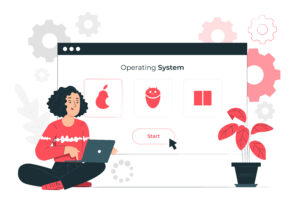In the rapidly evolving digital landscape, the success of business software heavily relies on delivering a seamless and satisfying user experience (UX) and an intuitive user interface (UI). As companies continue to invest heavily in technology, ensuring that their software caters to users’ needs and expectations has become a top priority, that is of any type of business software. This article delves into the significance of UX and UI design in business software, emphasizing how a well-crafted user-centric approach can elevate software applications to new heights of efficiency and productivity.
Importance of user experience (UX) and user interface (UI) design in business software
Understanding User Experience (UX) and User Interface (UI)
User Experience (UX) and User Interface (UI) are two distinct yet interconnected aspects of software design. UX focuses on how users interact with the software and the overall experience they have throughout their journey. It encompasses factors such as ease of use, efficiency, accessibility, and emotional response. On the other hand, UI deals with the visual elements of the software, including layout, design, and visual cues that guide users through their tasks. Both UX and UI are crucial for creating software that is not only aesthetically pleasing but also highly functional and user-friendly.
Enhanced Usability and Productivity
A business software application with a well-thought-out UX and UI design streamlines complex processes, making them more accessible and efficient for users. When software is intuitive and easy to navigate, employees can quickly adapt to the system, reducing the learning curve and increasing their productivity. Tasks that previously required extensive training or technical expertise become more manageable, empowering users to focus on their core responsibilities. This all has to go under various trends of business software development.
Customer Satisfaction and Loyalty
The success of any business software ultimately rests on its ability to meet user expectations and deliver value. By prioritizing UX and UI design, companies can create software that delights users and ensures a positive experience. Satisfied users are more likely to remain loyal to the software and the brand, becoming advocates who recommend it to others. Word-of-mouth marketing plays a crucial role in attracting new users and expanding the software’s reach within the market.
Reducing Support and Training Costs
A user-friendly software application not only enhances user productivity but also reduces the need for extensive support and training. When users can effortlessly navigate the software and perform tasks with ease, they encounter fewer roadblocks that require external assistance. Consequently, businesses can allocate fewer resources to user support and training, leading to cost savings and increased efficiency.
Competitive Advantage
In a highly competitive business environment, where various software options are available, the quality of the user experience can become a decisive factor for customers. So there are many vital things when it comes to business software, one should never do without knowing. Software companies that invest in UX and UI design gain a significant competitive advantage. A positive reputation for user-friendly software can set a company apart from its competitors and attract more customers in the long run.
Realizing Business Goals
Business software often serves specific purposes, such as improving communication, streamlining processes, or increasing data analysis capabilities. UX and UI design play a pivotal role in ensuring that these goals are achieved effectively. When software aligns with user needs, it becomes more likely that the software will achieve the desired business outcomes and deliver a measurable return on investment (ROI).
User-Centric Approach and Empathy
User-centric design, a core principle of UX and UI design, requires developers to put themselves in the users’ shoes and empathize with their needs and pain points. By understanding users’ perspectives, challenges, and preferences, designers can create solutions that cater directly to those requirements. This approach fosters a deeper connection between the software and its users, leading to increased user satisfaction and loyalty.
Iterative Improvement and Innovation
Software development is an ongoing process, and feedback from users is crucial for its improvement. With a user-centric approach, developers can gather valuable insights and identify areas for enhancement. Because of this, the role of business software is huge in transforming the way businesses modernize and upgrade. Regular iterations and updates based on user feedback enable software to stay relevant and competitive in a rapidly changing business environment. Moreover, this continuous improvement cultivates a sense of trust among users, as they witness their feedback being valued and incorporated into the software’s development.
Conclusion
In conclusion, user experience (UX) and user interface (UI) design are indispensable elements for creating successful business software. The significance of prioritizing UX and UI design lies in the potential to enhance usability, increase customer satisfaction and loyalty, reduce support and training costs, gain a competitive edge, achieve business goals, and foster innovation. By embracing a user-centric approach, businesses can ensure that their software resonates with users, leading to increased efficiency, productivity, and overall success in the digital landscape. As the business software industry continues to evolve, investing in UX and UI design remains a strategic imperative for companies seeking to thrive in the modern digital era.





2 thoughts on “Role of User Experience (UX) and User Interface (UI) Design in Business Software”
I have not thought the UX has a huge role while designing software. What else can you expect coming from a tech blogger? Thanks!
What i don’t understood is in reality how you’re now not actually much more smartly-favored about both UX & UI design than you may be now. You are very intelligent. You realize therefore considerably in terms of this matter, produced me in my view believe it from a lot of varied angles. At all times maintain it up!